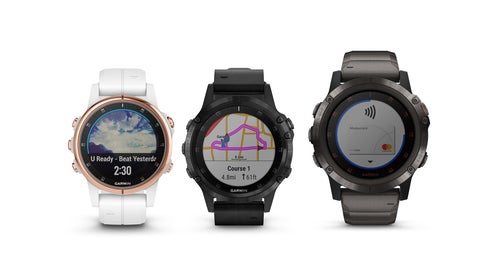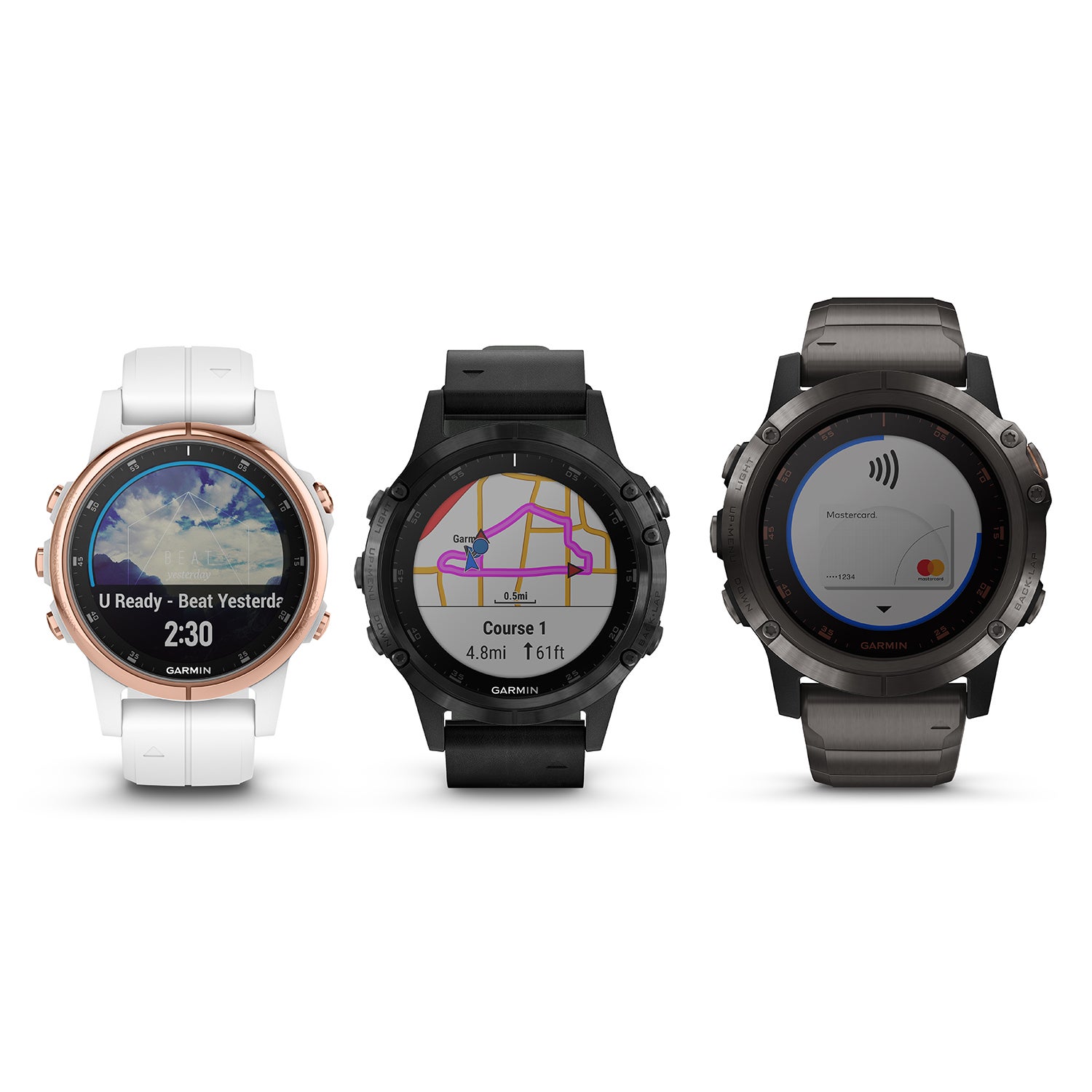GarminÔÇÖs Fenix family of watches just got another upgrade. On Monday, the tech company launched the Fenix 5S Plus ($800 to┬á$850), Fenix 5 Plus ($800 to┬á$1,100), and Fenix 5X Plus ($850 to┬á$1,150), an update to the three existing Fenix 5 watches (5S, 5, and 5X).
The three new watches all come in the same sizes as their predecessors, with 42-, 47– and 51-millimeter faces, but with narrower bezels and larger screensÔÇö20 percent bigger, in the case of the 5S. All the same top-end sport and smart features remain, like GLONASS and GPS activity tracking, barometric altimeter, wrist-based heart rate, on-screen topo maps, and quick notifications.
WhatÔÇÖs new? Wallet-free payments, music storage, expanded┬ánavigation capabilities, and, perhaps most significant, a pulse oximeter to measure blood oxygen concentration on the 5X PlusÔÇöthe first sports watch with that capability.
LetÔÇÖs start with the navigation features. The┬á5 Plus family now has navigation features previously exclusive to the 5X, including┬áfull-color topo maps and the ability to auto-generate routes from your current location based on how far you want to go. (Use the round-trip function to select your sport, mileage, and the direction you want to head, and the watch produces a list of courses to choose from.) The watches also show you nearby businesses, hotels, gas stations, and restaurants, and allow you to set┬áyour own route on the watch face, save it, and follow it.
Custom route setting is not a new feature for the industry. Other Garmin watches and from companies like Suunto have had those functions for years. But in the past, you had to set the routes on your computer via the companyÔÇÖs app, then download them to the watch (unless you had the 5X). In theory, the ability to set a course directly on the watch face means less time spent on your computer and more time outside doing your sport. In practice, however, setting up a custom course on the Garmin Fenix 5 Plus still takes several minutes at best, since you have you find and select specific individual waypoints using the up, down, and select buttons.
If youÔÇÖre going far in complex, mountainous terrain, itÔÇÖs probably just as fast (and safer) to map out your route at home. But if youÔÇÖre on a route, facing an unexpected detour or need to change course and find a bailout route, the ability to set a new course in the moment could be game changing.
The other big update, the pulse oximeter, is primarily useful for excursions into the alpine. The pulse-ox on the Fenix 5X Plus uses the same laser technology as those hospital finger clips. It shines two beams through your wrist and measures how much light reaches a detector on the other side. In the case of sports, it helps determine how your body responds to high altitude, where oxygen levels are lower. Sitting in our office, the watch told us our oxygen levels were at 100 percent. That reading dipped significantly on a run here in Santa FeÔÇöwhich makes sense after five miles in 75-degree heat at 7,000-plus feet above sea level. But without comparing it to a hospital-grade sensor, we canÔÇÖt say how accurate those readings were.
Battery life suffers a smidge for the added features (seven hours instead of nine in nontracking mode for the 5S Plus). Still, the Fenix 5 Plus series overall is a subtle yet significant upgrade to its predecessor, not just for the added navigation features and pulse-ox sensor but also for the bigger screen size, which means all that data is easier to read on the go. The average athlete certainly doesnÔÇÖt need to know their blood-oxygen saturation, but that tech has huge implications for people at the top end of mountain sportsÔÇöand the maximized screen size on the 5S has huge implications for people with small wrists.


